Design and description
The Briton-class corvettes were designed by Sir Edward Reed, the Director of Naval Construction, as lengthened versions of the Eclipse-class sloops. [1] Like the smaller ships, they had a ram-style bow to reduce weight forward by elimination of the knee above the stem. Similarly, he shortened the counter at the stern to save weight. [2]
The ships were 220 feet (67.1 m) long between perpendiculars and had a beam of 36 feet (11.0 m). Forward, the ships had a draught of 12 feet 9 inches (3.9 m), but aft they drew 16 ft 3 in (5.0 m). They displaced from 1,730 to 1,860 long tons (1,760 to 1,890 t) and had a burthen of 1,322 tons. [1] The hull was built entirely from wood except for iron crossbeams. [3] Their crew consisted of 220 officers and ratings. [1]
Two different types of engines and boilers were used with this class. HMS Druid, the first ship completed, had a two-cylinder horizontal steam engine driving a single 15-foot (4.6 m) propeller. [4] Four rectangular boilers provided steam to the engine at a working pressure of 30 psi (207 kPa ; 2 kgf/cm2 ). The engine produced a total of 2,272 indicated horsepower (1,694 kW) which gave her a maximum speed of about 13.066 knots (24.198 km/h; 15.036 mph) during sea trials. [1] In contrast, the two later ships had a two-cylinder horizontal compound expansion steam engine, driving a single 15-foot or 14-foot-9-inch (4.50 m) propeller. [4] Six cylindrical boilers provided steam to the engines at a working pressure of 60–64 psi (414–441 kPa; 4–4 kgf/cm2). The engines produced between 2,149 and 2,275 indicated horsepower (1,603 and 1,696 kW) which gave the two ships a maximum speed over 13 knots (24 km/h; 15 mph). [1] Briton and Thetis carried 255 long tons (259 t) of coal, while Druid carried an additional 30 long tons (30 t). Although no information is available on their range, Admiral G. A. Ballard estimated that Druid had only about two-thirds the range of her sisters, despite the additional coal that she carried, due to the greater efficiency of the compound expansion engines. [5]
The class was ship rigged and had a sail area of 15,000 square feet (1,394 m2). [1] The lower masts were made of iron, but the other masts were wood. [6] The ships were poor sailors and their best speed under sail alone was about 11 knots (20 km/h; 13 mph). Ballard attributed their poor performance under sail to the drag of the propeller, which could neither be hoisted out of the water, nor feathered. He also attributed their sluggish steering under sail to interference with the flow of water to the rudder by the fixed propeller. [7] The first two ships were re-rigged as barques after their first commission. [1] [Note 1]
The first two ships were initially armed with a mix of 7-inch and 64-pounder 71 cwt [Note 2] rifled muzzle-loading guns. The eight 64-pounder guns were mounted on the broadside while the two 7-inch (178 mm) guns were mounted on the forecastle and poop as chase guns. [1] The 16-calibre 7-inch gun weighed 6.5 long tons (6.6 t) and fired a 112-pound (50.8 kg) shell. It was credited with the nominal ability to penetrate 7.7-inch (196 mm) armour. [9] After the completion of their first commissions, the two ships were rearmed with a total of fourteen lighter 64-cwt 64-pounder guns, two of which replaced the 7-inch guns as chase guns. Thetis, the last ship completed, was given this armament from the beginning. [10]
Ships
Druid was the last ship to be built at Deptford Dockyard. [4] The ship was initially assigned to the Cape of Good Hope Station, where she remained for two years before being transferred to the North America and West Indies Station. Druid was refitted upon her return home in December 1876, which included rearmament. The ship recommissioned in February 1879 and returned to the North American Station. She returned home in September 1882 and was paid off. Druid was laid up in the Medway until she was sold for scrap in 1886. [11]
Briton was the first of the trio to be commissioned and was assigned to the East Indies Station in 1871. She remained there for four and a half years, mostly engaged on the suppression of the slave trade. The ship was refitted and rearmed upon her return home and Briton remained in reserve until recommissioned in 1881 for service on the Cape Station. She was transferred back to the East Indies after two years on the Cape. Her crew was relieved in 1884 by another sent out from Britain and the ship remained on station until she was sold, less her armament, in Bombay in 1887. [12]
The construction of Thetis followed her sisters after a two-year delay and she was initially assigned to the China Station in 1873. She was transferred to the East Indies after a year on station and returned home in 1877 where she was refitted. Two years later, the ship was assigned to the Pacific Station until she was ordered home in 1883. Thetis was paid off after her arrival and was sold in 1887. [13]
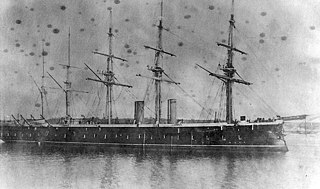
HMS Agincourt was a Minotaur-class armoured frigate built for the Royal Navy during the 1860s. She spent most of her career as the flagship of the Channel Squadron's second-in-command. During the Russo-Turkish War of 1877–1878, she was one of the ironclads sent to Constantinople to forestall a Russian occupation of the Ottoman capital. Agincourt participated in Queen Victoria's Golden Jubilee Fleet Review in 1887. The ship was placed in reserve two years later and served as a training ship from 1893 to 1909. That year she was converted into a coal hulk and renamed as C.109. Agincourt served at Sheerness until sold for scrap in 1960.

HMS Royal Oak was a Prince Consort-class armoured frigate built for the Royal Navy in the 1860s. The lead ship of her class, she is sometimes described as a half-sister to the other three ships because of her different engine and boiler arrangements. Like her sisters, she was converted into an ironclad from a wooden ship of the line that was still under construction.

HMS Active was a Volage-class corvette built for the Royal Navy in the late 1860s. Launched in 1869, she entered service in 1873, and was the commodore's ship on the Cape of Good Hope and West Africa Station. Her crew served ashore in both the Third Anglo-Ashanti and Zulu Wars. From 1885 to 1898, the ship was the flagship of the Training Squadron. Active was sold for scrap in 1906.
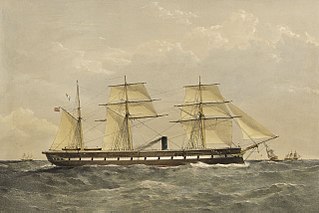
HMS Resistance was the second of two Defence-class ironclads built for the Royal Navy in the 1860s. She was the first capital ship in the Royal Navy to be fitted with a ram and was given the nickname of Old Rammo. Resistance was initially assigned to the Channel Fleet upon commissioning, but was transferred to the Mediterranean Fleet in 1864, the first ironclad to be assigned to that fleet. She was rearmed in 1867 and became a guardship when recommissioned in 1869. The ship was reassigned to the Channel Fleet in 1873 before reverting to her former duties in 1877. Resistance was decommissioned in 1880 and was used for gunnery and torpedo trials beginning in 1885. The ship was sold for scrap in 1898 and foundered in 1899 en route to the breaker's yard. She was salvaged and later scrapped.
The Hector-class ironclads were a pair of armoured frigates built for the Royal Navy (RN) in the 1860s. Hector was completed in 1864 and assigned to the Channel Fleet until she began a refit in 1867. Valiant's builder went bankrupt, delaying her launching by a year. The ship then had to wait almost another five years to receive her guns and be commissioned. Both ships were assigned to the Reserve Fleet from 1868 until they were paid off in 1885–1886. They were mobilized during the Russo-Turkish War of 1877–1878, but saw no action. They were hulked in the late 1890s and assigned to shore establishments. Hector was scrapped in 1905, but Valiant was converted into a floating oil tank in 1926; she was sold for scrap thirty years later.

HMS Achilles was an armoured frigate built for the Royal Navy in the 1860s. Upon her completion in 1864 she was assigned to the Channel Fleet. The ship was paid off in 1868 to refit and be re-armed. When she recommissioned in 1869, she was assigned as the guard ship of the Fleet Reserve in the Portland District until 1874. Achilles was refitted and re-armed again in 1874 and became the guard ship of the Liverpool District in 1875. Two years later, she was rejoined the Channel Fleet before going to the Mediterranean in 1878. The ship returned to the Channel Fleet in 1880 and served until she was paid off in 1885.
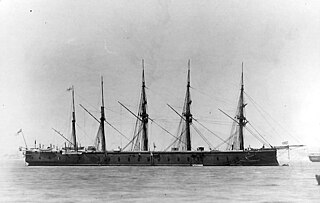
HMS Northumberland was the last of the three Minotaur-class armoured frigates built for the Royal Navy during the 1860s. She had a different armour scheme and heavier armament than her sister ships, and was generally regarded as a half-sister to the other ships of the class. The ship spent her career with the Channel Squadron and occasionally served as a flagship. Northumberland was placed in reserve in 1890 and became a training ship in 1898. She was converted into a coal hulk in 1910 [see below] and sold in 1927, although the ship was not scrapped until 1935.

HMSZealous was one of the three ships forming the second group of wooden steam battleships selected in 1860 for conversion to ironclads. This was done in response to the perceived threat to Britain offered by the large French ironclad building programme. The ship was ordered to the West Coast of Canada after she was completed to represent British interests in the Eastern Pacific Ocean. Zealous became the flagship for the Pacific Station for six years until she was relieved in 1872. She was refitted upon her arrival and subsequently became the guard ship at Southampton until she was paid off in 1875. The ship was in reserve until she was sold for scrap in 1886.

HMS Lord Clyde was the name ship of the wooden-hulled Lord Clyde class of two armoured frigates built for the Royal Navy (RN) during the 1860s. She and her sister ship, Lord Warden, were the heaviest wooden ships ever built and were also the fastest steaming wooden ships in the RN. Lord Clyde was initially assigned to the Channel Fleet in 1866, but was transferred to the Mediterranean Fleet in 1868. The ship suffered engine problems throughout her career and it needed to be replaced after only two years of service. She rejoined the Mediterranean Fleet in 1871, but was badly damaged when she ran aground the next year. When Lord Clyde was under repair, her hull was found to be rotten and she was sold for scrap in 1875.

HMS Inconstant was an unarmored, iron-hulled, screw frigate built for the Royal Navy in the late 1860s. Upon completion in 1869, she was the fastest warship in the world and was assigned to the Channel Squadron. Two years later the ship was transferred to the Detached Squadron for a brief time before she was paid off into reserve in 1872. Inconstant was recommissioned in 1880 for service with the Flying Squadron that circumnavigated the world in 1880–82. On the return voyage, the ship was diverted to Egypt during the Anglo-Egyptian War of 1882 and played a minor role supporting operations ashore. She was reduced to reserve again after her return and was served as an accommodation ship in 1897. Inconstant was hulked in 1904 and became a training ship in 1906. She continued in that role, under a variety of names, until she was sold for scrap in 1955 and subsequently broken up, the second-to-last surviving Pembroke-built warship in existence.

HMS Sutlej was a Cressy-class armoured cruiser built for the Royal Navy around 1900. Upon completion she was assigned to the China Station. In 1906 she became a training ship for the North America and West Indies Station before returning home and being assigned as the flagship of the reserve Third Fleet in 1909. Relieved as flagship in 1910, she remained in reserve until the beginning of World War I in August 1914.
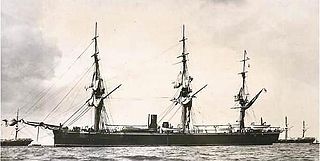
HMS Rover was an 18-gun iron screw corvette built for the Royal Navy in the 1870s, the sole ship of her class. The ship was initially assigned to the North America and West Indies Station until she returned home in 1879. She was transferred to the Training Squadron when it formed in 1885. Rover was not really suitable for such a role and she was placed in reserve four years later and then sold for scrap in 1893.

HMS Druid was a Briton-class wooden screw corvette built for the Royal Navy in the late 1860s. She spent her service life overseas on the Cape of Good Hope and North America and West Indies Stations and was sold for scrap in 1886.

The Volage class was a group of two screw corvettes built for the Royal Navy in the late 1860s. Both ships spent the bulk of their active service abroad. Volage spent most of her first commission assigned to the Detached or Flying Squadron circumnavigating the world and then carried a party of astronomers to the Kerguelen Islands to observe the Transit of Venus in 1874. The ship was then assigned as the senior officer's ship in South American waters until she was transferred to the Training Squadron during the 1880s.

HMS Volage was a Volage-class corvette built for the Royal Navy in the late 1860s. She spent most of her first commission assigned to the Flying Squadron circumnavigating the world, and later carried a party of astronomers to the Kerguelen Islands to observe the transit of Venus in 1874. The ship was then assigned as the senior officer's ship in South American waters until she was transferred to the Training Squadron during the 1880s. Volage was paid off in 1899 and sold for scrap in 1904.
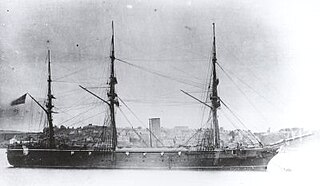
HMS Amethyst was the lead ship of the Amethyst-class corvettes built for the Royal Navy in the early 1870s. She participated in the Third Anglo-Ashanti War in 1873 before serving as the senior officer's ship for the South American side of the South Atlantic. The ship was transferred to the Pacific Station in 1875 and fought in the Battle of Pacocha against the rebellious Peruvian ironclad warship Huáscar two years later. This made her the only British wooden sailing ship ever to fight an armoured opponent. After a lengthy refit, Amethyst again served as the senior officer's ship on the South American station from 1882 to 1885. She was sold for scrap two years later.
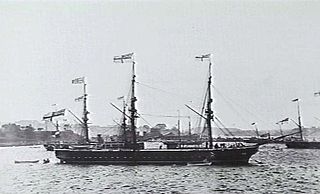
The Amethyst-class corvettes were a class of the last wooden warships to be built for the British Royal Navy; each was built at a Royal Dockyard. Three were ordered under the 1871–72 Programme and two under the 1872–73 Programme. Built in the early and middle 1870s, they mostly served overseas and were retired early as they were regarded as hopelessly obsolete by the late 1880s. She served alongside HMS Shah in the action against the Peruvian warship Huascar on 29th May 1877.

HMS Wild Swan was an Osprey-class sloop built for the Royal Navy in the mid-1870s. She was launched in 1877 and became a base ship in 1904, being renamed Clyde. She was renamed Columbine in 1913 and was sold for breaking in 1920.

The Beacon-class gunvessels were a class of composite gunboats built for the Royal Navy in the late 1860s. They were the first warships of the Royal Navy expressly designed to use the engines of an older class of ships with a different hull shape. They were generally deployed overseas to the China, East Indies, West Africa, Pacific, North America and West Indies Stations. In addition to showing the flag, the ships fought pirates and suppressed the slave trade in East and West Africa. As their engines wore out in the mid-1880s, they were mostly retired and scrapped by the end of the decade. A few survived into the early 1900s as they were modified for harbour service before being sold or scrapped.
The Frolic-class gunvessels were a class of composite gunboats built for the Royal Navy in the early 1870s. They were generally deployed overseas to the East Indies, West Africa, and China Stations. In addition to showing the flag, the ships fought pirates and suppressed the slave trade in East Africa. They were placed in reserve in the mid-1880s, and two of them were sold for scrap by the end of the decade. The other pair survived for longer as they were either modified for harbour service or became a training ship before being sold or scrapped. The last survivor, Ready, was used in support of William Beebe's expedition in his bathysphere in 1930 off Bermuda.
















